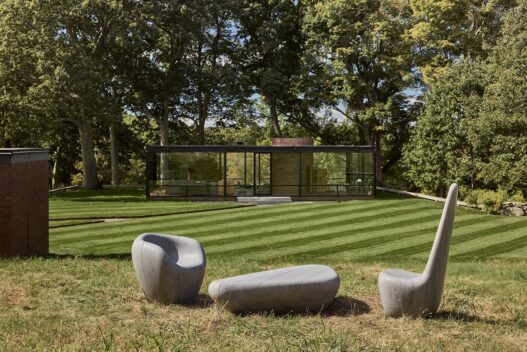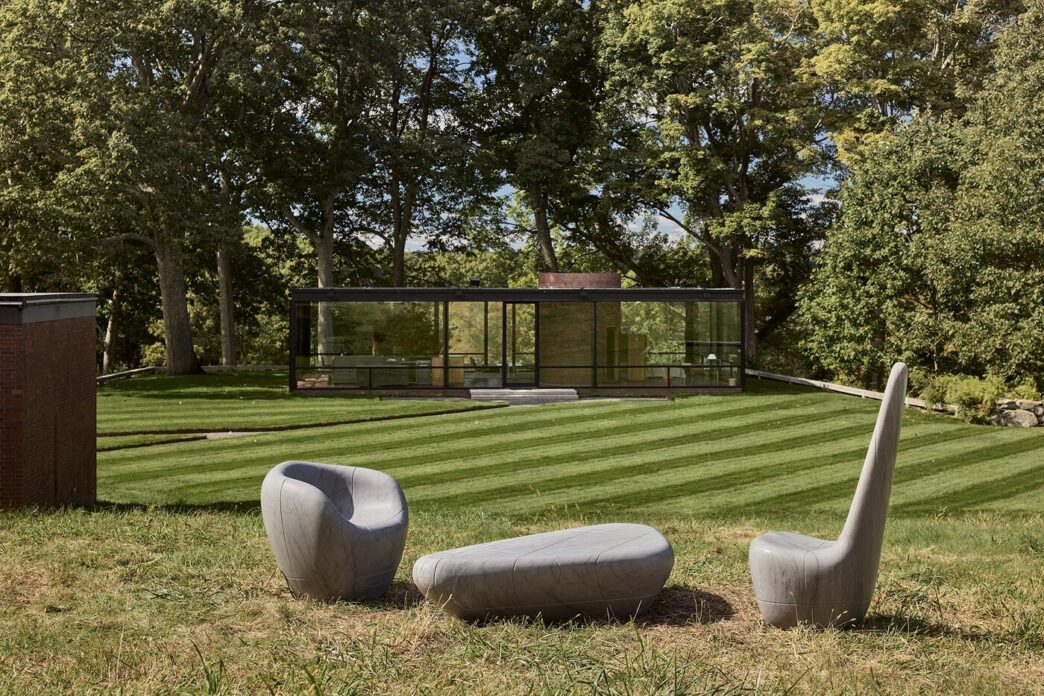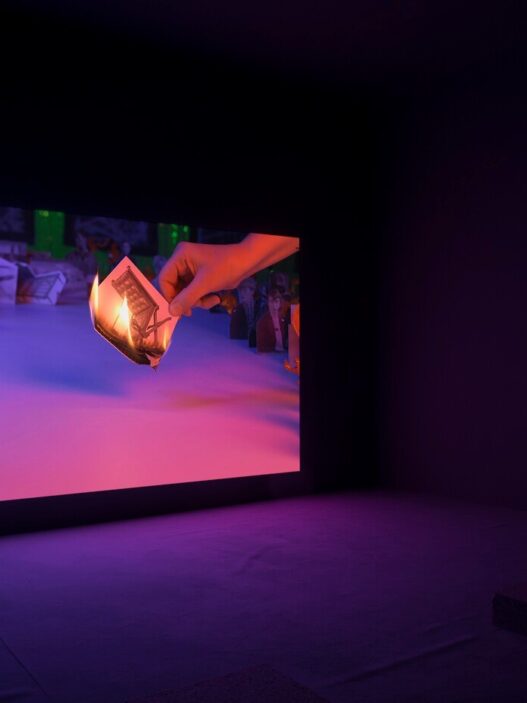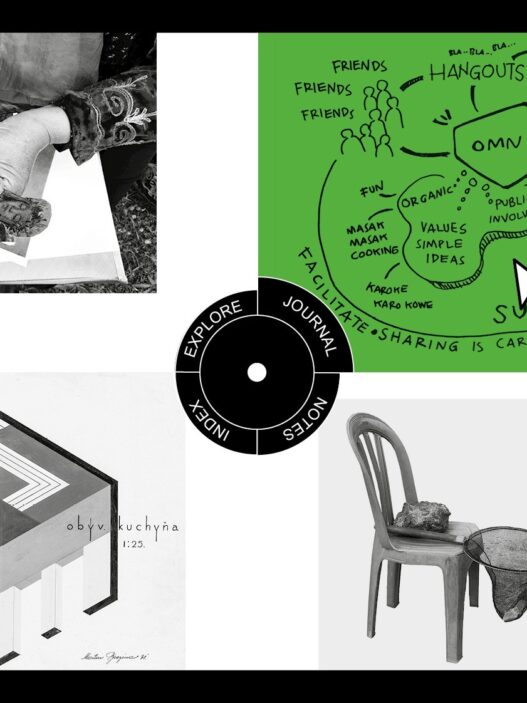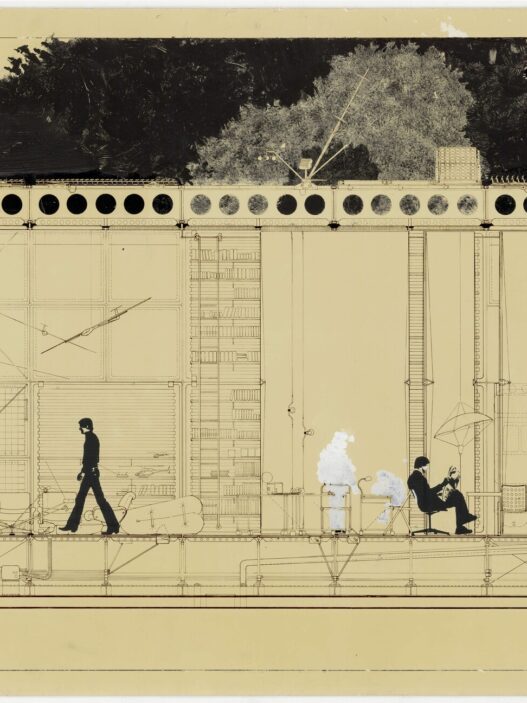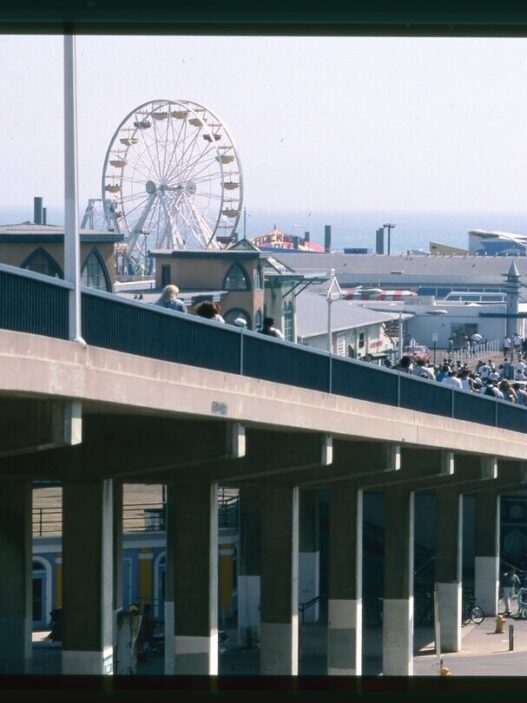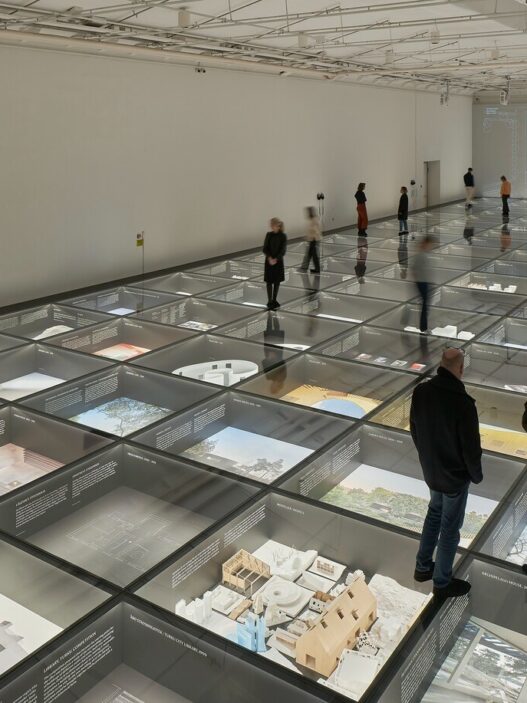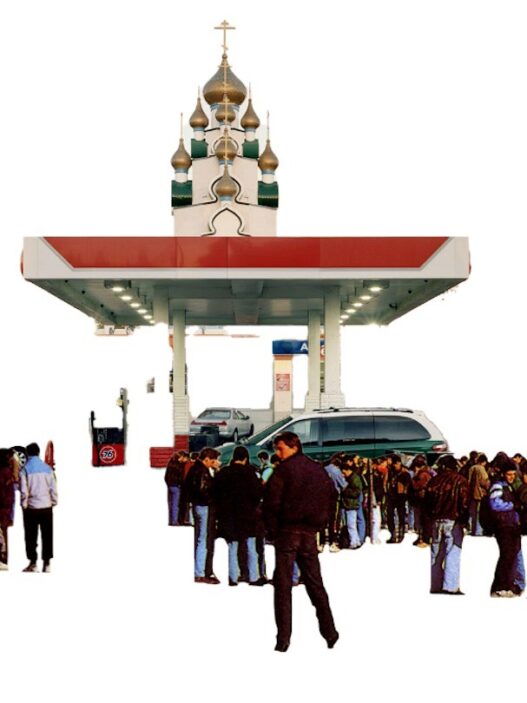September 9–December 12, 2022
Since 2020, the renowned designer Robert Stadler, headquartered in Paris, has been collaborating with The Glass House, a National Trust for Historic Preservation location, on a ground-breaking exhibition that is specifically related to the location. The public may now view this collection of design interventions in an exhibition that explains how Stadler carefully evaluated The Glass House’s history, its collections, and its previous residents while maintaining his creative focus on modern design that is paired with art.
The pieces engage The Glass House’s several sites, including the Sculpture Gallery (1970), Da Monsta (1995), the main glass structure (1949), and the environment itself, in a dialogue with the property’s heart. The Glass House is hosting a lot of the showcased work’s international premieres. Philip Johnson’s dedication to design as well as the architect’s distinctive humour fascinated Stadler, who gave the exhibition the moniker Playdate.
Asked about his approach to reinterpreting The Glass House through his own design objects, Stadler noted: ”Critiqued for being inconsistent, Johnson once brilliantly stated he was a “consistent chameleon.” I see this presupposed inconsistency more like a great freedom. He had an inner urge to break with certain conventions defining a serious, ideological approach to architecture for the sake of avoiding the worst, which would be boredom and dull clients.”
Prior to the epidemic, The Glass House approached Stadler about collaborating, but had to postpone this significant exhibition until it could be scheduled in conjunction with Stadler’s stay at the Harvard Graduate School of Design. This fall, he is collaborating with students there to examine the possibilities for design in a society dominated by social media.
Two programs that are shown in the exhibition’s opening section are world premieres. As a dialogue with its original collection of Bauhaus furniture, five pieces from the OMG-GMO series were installed inside the Glass House itself. The Glass House serves as a metaphorical greenhouse for these seemingly incongruous, yet carefully crafted designs, which encourage the viewer to reinterpret what can be housed in this iconic piece of modern architecture and question how we attempt to reprogram nature itself. An allusion to genetically modified food, OMG-works GMO’s resemble the construction of fruits and vegetables and highlight the critical relationship between nature and design. These items, which were designed as a collection of miniature monuments, criticize and parody human attempts to manipulate nature. For example, a slice of rectangular, seedless watermelon becomes the seat of a stool, while bananas bend to create a clothes rack. Design is at the service of nature.
Richard, a work by Stadler in the Sculpture Gallery, satirically responds to Johnson’s idea of “safe peril.” Johnson was renowned for incorporating a sense of titillation into his architecture; at the Sculpture Gallery, examples include the glass ceiling and the main, rail-free staircase. Nearly a dozen painted bowling balls, which obviate movement, are positioned statically by Stadler.
These spheres combine the utilitarian with the artistic in an environment filled with precious works by major figures of postwar 20th-century American art, from Frank Stella to Michael Heizer. In a nod to Richard Artschwager’s Yes/No, which employed bowling balls inscribed with “YES” and “NO” to be distributed on a gallery floor. Stadler chooses today’s bowling balls which – being anything but black – are a perfect mirror of contemporary pop culture. He then replaces Artschwager’s textual Yes/No by progressively blackening out the various ball’s colorful patterns before curating these among The Glass House’s notable permanent collection.
The second phase of Stadler’s show is located in Da Monsta, the final structure built by Johnson on the property. Soft Screen, a piece of lighting art by Stadler, contrasts the immateriality of light with hard surfaces. New Paintings #1, a table with a marble inlay top that blurs the distinction between art and furniture, is also on show.
A focal point from and to that grouping in direct visual communication with the main structure of the Glass House is presented by numerous pieces from Stadler’s outdoor Ditto collection of stone furniture on the hillside opposite the Glass House. This collection of Ditto makes a point about Philip Johnson and David Whitney’s absence from the building they spent years planning together and where they frequently hosted large gatherings of artistic people.
It is this eclecticism of Johnson and Whitney that motivated Stadler to bring the breadth of design approaches to The Glass House. Like Johnson himself, Stadler is not defined by a single visual style. Instead, his work is unified by Stadler’s focus on innovation and conceptual frameworks—towards materials and forms—that bridge the playful with utility, serious intention, and social commentary.
Richard, Soft Screen and OMG-GMO are international premieres.
Soft Screen, New Paintings #1 and Ditto, are courtesy of the generous support of Carpenters Workshop Gallery, where this fall Stadler’s work is featured in an exhibition in New York alongside the art of Richard Artschwager. OMG-GMO appears courtesy of the kind support of Carwan Gallery, Athens-Greece and master-ceramicists BITOSSI.
The exhibition is presented by the curatorial department of The Glass House with the assistance of Studio Robert Stadler, Paris.
Advanced tickets are required. Open Friday–Monday, 10am–4pm.
The Glass House
The Glass House Visitor Center and Design Store
199 Elm Street
New Canaan, Connecticut 06840
USA
Hours: Friday–Monday 10am–4pm
T +1 203 594 9884









